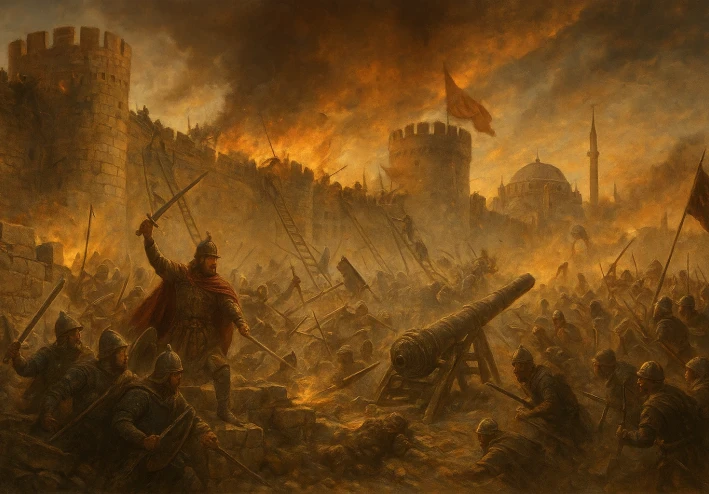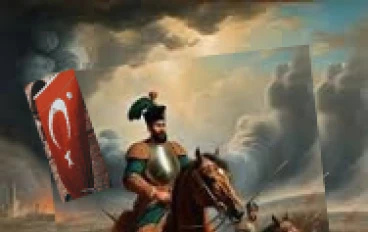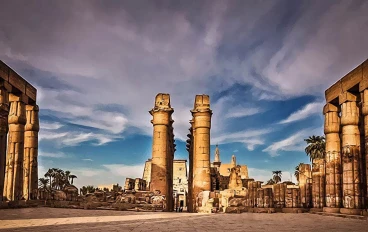
The Siege of Constantinople
The Siege of Constantinople

In the spring of 1453, the legendary city of Constantinople stood as the last fortress of the Byzantine Empire. For more than a thousand years, its massive walls had repelled countless invaders. Now, a new power threatened its existence—the Ottoman Empire, under the ambitious and determined Sultan Mehmed II. At only twenty-one years of age, he had vowed to capture the city and make it the jewel of his dominion.
The Final Stand of Byzantium
Inside the city, Emperor Constantine XI Palaiologos prepared for what seemed an impossible defense. His army consisted of about seven thousand men, including foreign allies, facing an Ottoman force of over eighty thousand soldiers. Despite these overwhelming odds, Constantine refused to surrender. He inspired his troops, reminding them that they fought not only for their lives but for their faith and the glory of their empire. Churches were filled with citizens praying for deliverance, their voices echoing beneath the domes of Hagia Sophia.
The Sultan’s Grand Design
Mehmed II was no ordinary ruler. He devised an elaborate plan to capture the city, cutting off all supply lines and surrounding Constantinople by land and sea. To ensure victory, he employed a revolutionary weapon—the Basilica Cannon, an enormous artillery piece capable of breaching the strongest fortifications in the world. Day after day, the cannon roared, pounding the ancient Theodosian Walls. The Byzantines worked tirelessly each night to repair the breaches, their courage undiminished.
The Dawn of Fate
On May 29, 1453, as the first light of dawn crept across the horizon, Mehmed launched his final and most ferocious assault. The Ottoman forces attacked in waves. First came the irregular troops, followed by the disciplined Anatolian soldiers, and finally the fearsome Janissaries, the elite warriors of the empire. The defenders fought with unmatched valor, wielding swords, hurling stones, and pouring boiling oil upon their foes. Emperor Constantine XI fought at the front, rallying his men until the last moment.
In the chaos of battle, a small but fateful mistake occurred. The Kerkoporta, a minor gate in the walls, was left unsecured. Ottoman soldiers slipped through and raised their banner inside the city. Panic spread among the defenders. Realizing the end was near, Constantine is said to have removed his imperial robes and charged into the fray, disappearing in the tide of battle. His body was never found, and legends arose that he would return one day to reclaim his throne.
The Fall of a Thousand-Year Empire
By sunrise, the banner of the crescent flew over Constantinople. The Ottomans poured into the city, and the great cathedral of Hagia Sophia became a mosque. The Byzantine Empire, which had endured for over a millennium, ceased to exist. Constantinople was reborn as Istanbul, the splendid capital of the Ottoman Empire.
A New Era Begins
The fall of Constantinople was more than the end of an empire; it was the turning point of an age. Europe, shocked by the loss of the great Christian city, sought new routes to the East. This search sparked the Age of Exploration, leading to the discovery of new lands and the reshaping of the world. Mehmed II became known as “The Conqueror,” while Constantine XI entered history as a symbol of courage and sacrifice. The city that once stood as the center of Christianity now became the heart of a vast Islamic empire, altering the course of history forever.





































